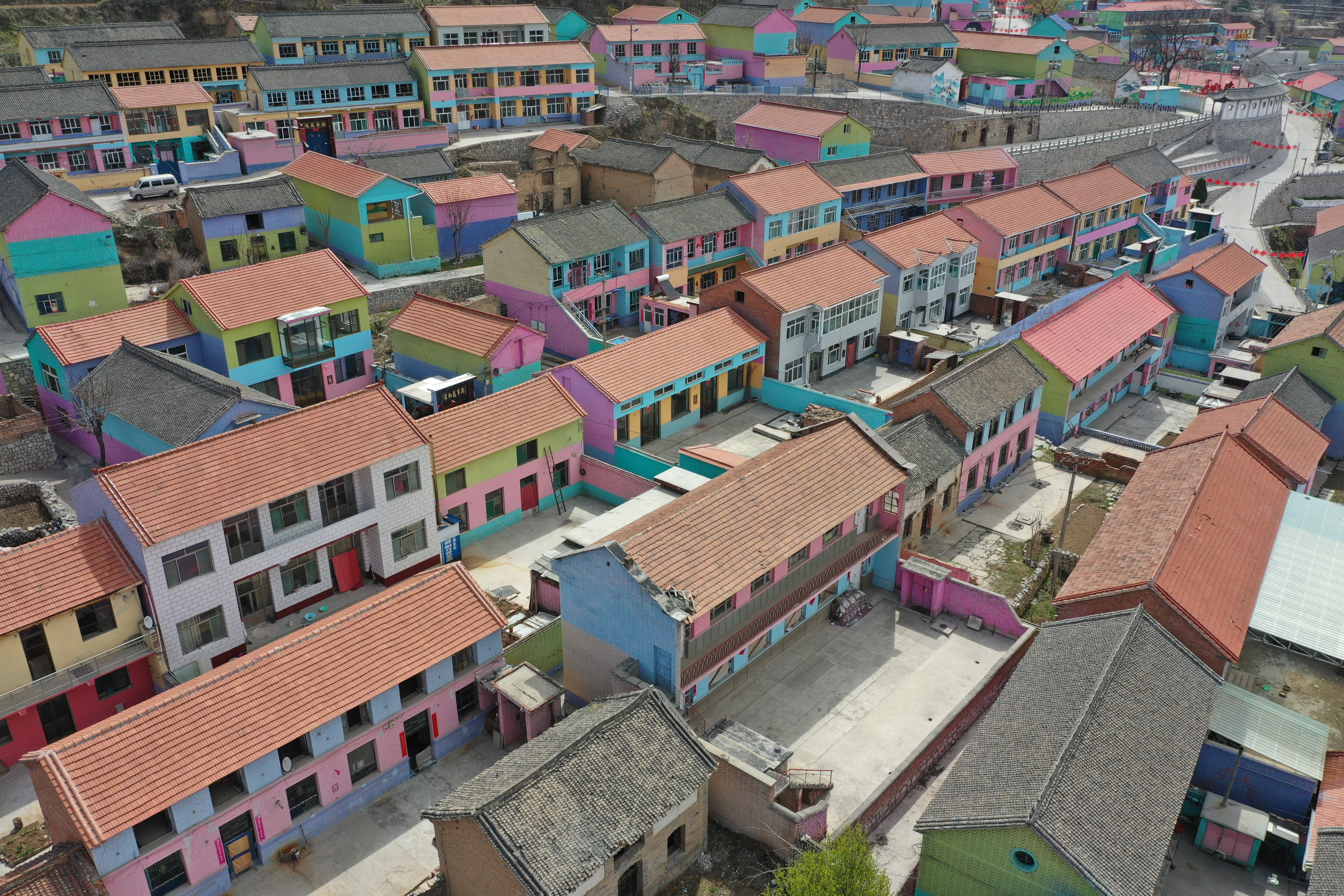

Northern Chinese villages under anti-poverty programs: past vs. present


Listen to this story read by AI voice.

Poverty-relief programs implemented in northwest China’s Shanxi Province have achieved considerable success across many villages, which now have access to road networks and better housing for residents. The once barren lands are afforested with green trees, and employment have grown with burgeoning tourism.
Without these efforts, the province's many plateau and mountain villages would have remained impoverished due to lack of decent roads and arable lands, plus the ensuing loss of labor force and industrial diversity.
By February 2020, a total of 7,993 villages in all of the 58 impoverished counties in Shanxi have shaken off poverty, with the incidence of poverty dropping to less than 0.1 percent.
Each of those villages has its own story in eliminating poverty. The images below might give an idea of the changes some villages have gone through over the years.
Dongshentou Village used to rely solely on agriculture to support its economy. The Shenhai wetland park is a local effort to develop tourism and relieve poverty.
Jiajiazhuang villagers were once stuck in poverty because of almost all saline-alkali soil in the fields. Young people in the village has successfully improved residents' living condition by mechanizing its agriculture and promoting rural tourism.
Jianxi Village once saw its villagers in poverty due to inconvenient transport, single industrial structure and loss of labor force. In recent years, the village puts efforts on developing tourism industries and providing job opportunities to poor residents while improving community appearance and living environment. The villagers have all shaken off poverty by 2018.
Located on the fringes of the Mu Us Desert, the forest cover of Youyu County was less than 0.3 percent in the mid-20th century. Thanks to unceasing efforts on both afforestation and tourism, 55 percent of the county's land is now covered by forests and 99 percent of desertified land is under control. In 2019, the local rural residents' annual per capita income was about 9,000 yuan (1,283 U.S. dollars).
Nancao Village has funded over 200 impoverished households to renovate their once dilapidated houses.
Residents in Nanpingtouwu Village scraped a living due to underdeveloped infrastructure, limited natural resources and low productivity. Life in the village have improved when cash crops and herbs are planted, and local handicrafts are turned into products. Since 2016, the village started to seek development in geo-tourism, taking advantage of the scenery of the nearby Taihang mountain valleys. Its colour-painted houses have also become a new attraction for tourists looking for an artistic tinge.
Nantong Village was once an extremely poor area. To help improve its residents' living standard, Nantong Village has taken measures including shantytown redesign and relocating residents for poverty-relief purposes. The villagers shook off poverty by the end of 2017, with their annual income per capita approximating 10,000 yuan (1,425 U.S. dollars).
Puming Village was a typical village where villagers were once mired in poverty due to barren soil and frequent sandstorm in summer and autumn. Thanks to efforts made by local government that focus on both poverty alleviation and afforestation, land degradation situation at the village has greatly improved under a government-sponsored contract afforestation program.
Songjiagou, once a village known for its harsh living condition, was designated as a place to take in the nearby 145 impoverished rural households in 2017. Taking advantage of this opportunity, Songjiagou Village, supported by Kelan County, rebuilt itself by dismantling shabby houses and developing rural tourism. Nowadays, the village is known for its enticing tourism projects.
Xigou was a poor village lying deep in the Taihang Mountains. In recent years, the village has witnessed its economy greatly improved after advanced farming technologies and tourism industries were introduced.
Zhaojiawa Village had 21 villagers who lived in an extreme poverty due to scarcity of resources and barren soil. Thanks to a poverty relief relocation program, the 21 villagers on Sept. 22, 2017 moved to the Guanghuiyuan relocation community where they are not only enjoying amenities but also living in a much better life ever since.

Cao Yang
Born in Taiyuan, Shanxi in November 1989, Cao Yang currently works as photojournalist at Xinhua News Agency Shanxi Branch. His reportage focuses on the battles against poverty in some of the most impoverished areas of Shanxi Province.
Producers: Wang Jianhua, Xue Dongmei
Editors: Lin Fanjing, Li Mangmang, Zhao Yusi, Yu Yang, Wang Siwei, Meng Tao
Web Designers: Peng Yuhe, Wang Yiliang
